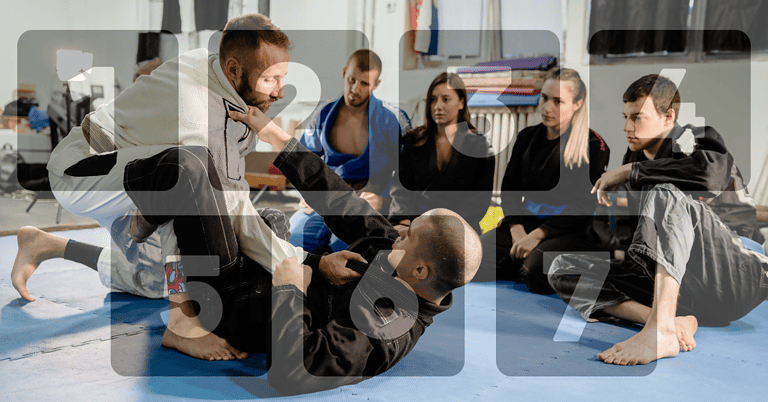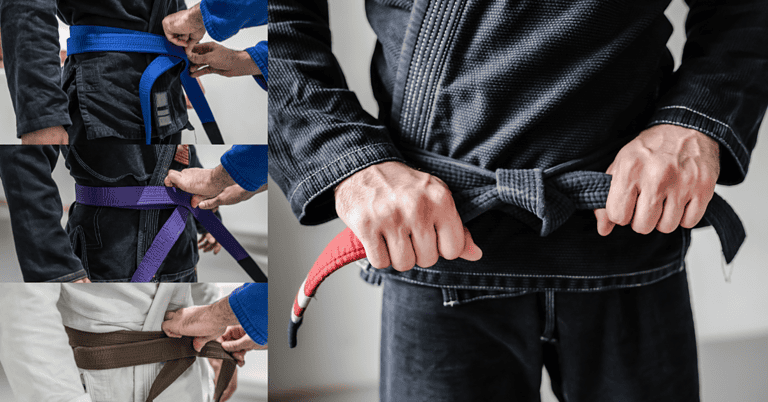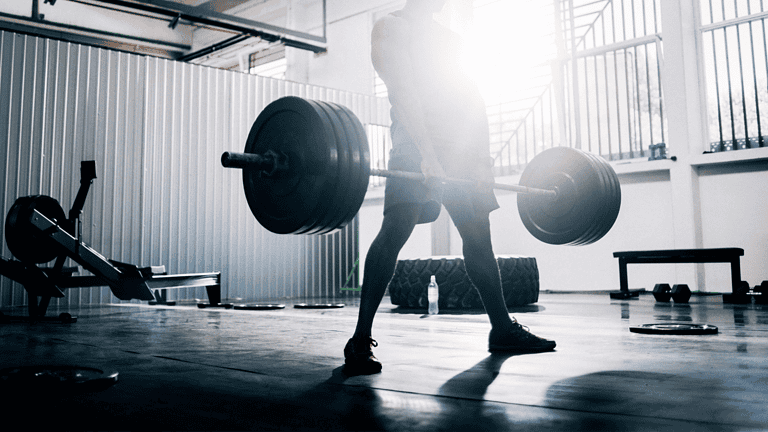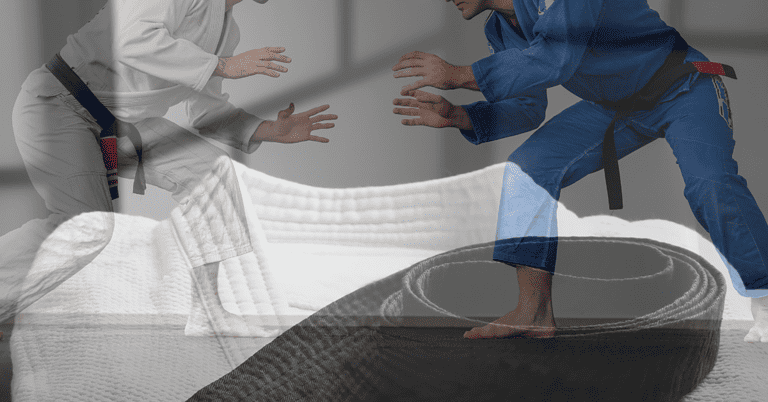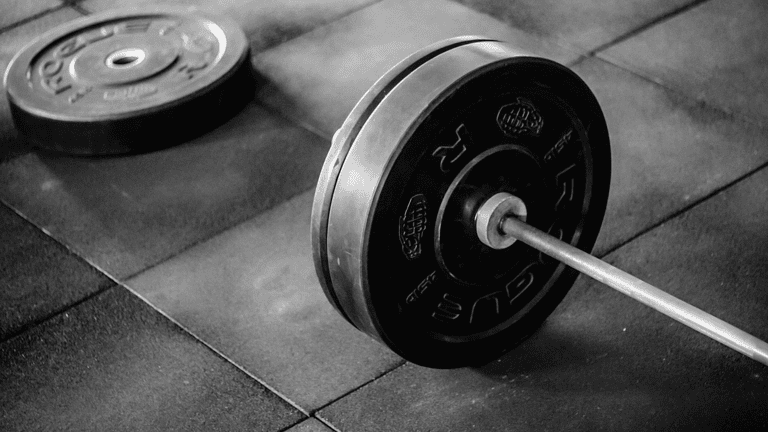5 Tips to Improve Health
Depending on your current health status, the idea of improving your health might seem like an overwhelming or impossible task. And just to be clear, when I say “improving your health”, I’m referring to achieving / maintaining a healthy body weight and developing overall physical fitness.
Considering the impact that being overweight and living a sedentary lifestyle can have on the development of serious health conditions, you really can’t afford to take a pass on this and write it off as being too hard. The truth is that improving your health doesn’t have to be difficult. That’s not to say that improving your overall health and wellness over the long term is easy, but there are some relatively simple things you can do (and start doing as soon as today) to get moving in the right direction and start making immediate progress.
5 Tips to Improve Health
Tip #1 – Take a Walk
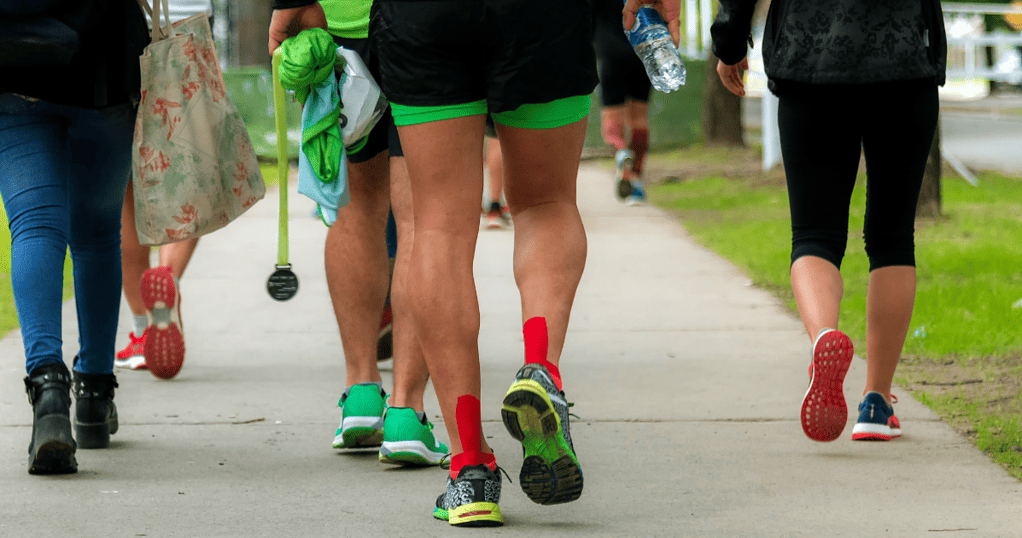
Walking is a basic physical activity that almost everybody does every single day, but unfortunately we can be severely lacking when it comes to the amount of walking that we do. For many Americans, a huge portion of the day is spent sitting. Sitting in the car, bus, or train on the way to and from work. Sitting at a desk while at work. Sitting to eat meals. Sitting to watch TV. And so on. In fact, Americans do so much sitting these days, and the health consequences of too much sitting can be so severe, that you’ve probably heard the phrase “sitting is the new smoking”.
Walking, on the other hand, has a number of associated health benefits. A fairly recent study published by the Journal of the American Medical Association (JAMA) concluded that taking up to about 10,000 steps per day may be associated with a lower risk of all-cause mortality (including mortality from cancer and cardiovascular disease) as well as the incidence of cancer and cardiovascular disease.
So how do we do less sitting, more walking, and get more steps in each day? Here are some things I’ve done over the past few years that have worked for me and might work for you too:
Park Far Away
When you go to a store, a restaurant, or wherever, intentionally park far away (as long as there’s no safety issue in doing so). Don’t covet that parking spot right up in the front. Proudly choose the spot way in the back that makes you do the most walking.
Take the Stairs
If you’re in a multi-level structure that has an elevator or escalator but also has the option to take the stairs… take the stairs. I’m not saying you need to walk up 30 flights of stairs in a tall office building, but if you’re going up and down two or three floors, skip the elevator and take the stairs (especially if this is something you do everyday, e.g. for work).
Walk to School and/or Work
This isn’t going to be possible for everyone, but if you have the option try walking to school and/or work. It might take a little more planning and time management, but if you have young children who are in school (or if you’re in school), skip the car and walk to school.
I started doing this a couple of years ago, and honestly a big chunk of my walking everyday comes from walking to and from my kids’ school. If your school isn’t within a reasonable walking distance, try a different form of active transportation like biking to school or riding a kick scooter (the same applies with getting to work). Something like the ubiquitous Razor scooter could be a good option. They fold up neatly into a fairly light package that’s easy to carry, and yes they do make them for adults as well as for kids.
Walk the Dog
I mentioned above that a big chunk of my steps every day are associated with walking to and from my kids’ school. Well, the other big contributor to my daily step count is walking my dogs. Getting more steps in by walking the dog will obviously be a challenge if you don’t have a dog. Or maybe this will be your motivation to get a dog. 🙂
I have two dogs who need to get out and walk every day, and that means that every day I’m out walking around the neighborhood with them. If you don’t have a dog (and don’t want to get a dog), try to get into the habit of just going for a walk around your neighborhood every day. Maybe you can build a routine of going out for a walk every night after dinner.
Gamification
Outside of walking the kids to school and walking the dogs, another thing that’s helped me get more steps every day is the gamification of walking. Gamification is defined as “the application of typical elements of game playing (e.g. point scoring, competition with others, rules of play) to other areas of activity” generally to encourage participation.
With respect to walking, gamification came to me in the form of a fitness tracker. There are a number of different types of fitness trackers out there… everything from watches to bands to rings and more. Two that I’ve personally used and found success with are the Fitbit Charge and the Amazfit Band 7.
While fitness trackers like these do a lot of different things and I’ve found them helpful in tracking a number of different health metrics (like sleep), a main use is counting steps. The gamification comes in the form of viewing your number of steps as a score… a target you’re trying to hit… a game you’re trying to win every day. I have my daily goal set to that 10,000 steps target mentioned above, and throughout the day I check my stats to make sure I’m making progress toward that goal. I can’t tell you how many times this has prompted me to squeeze in an extra walk in the evening because I’ve come up a little short of hitting my goal and need to “win the game”.
Tip #2 – Find an Active Passion
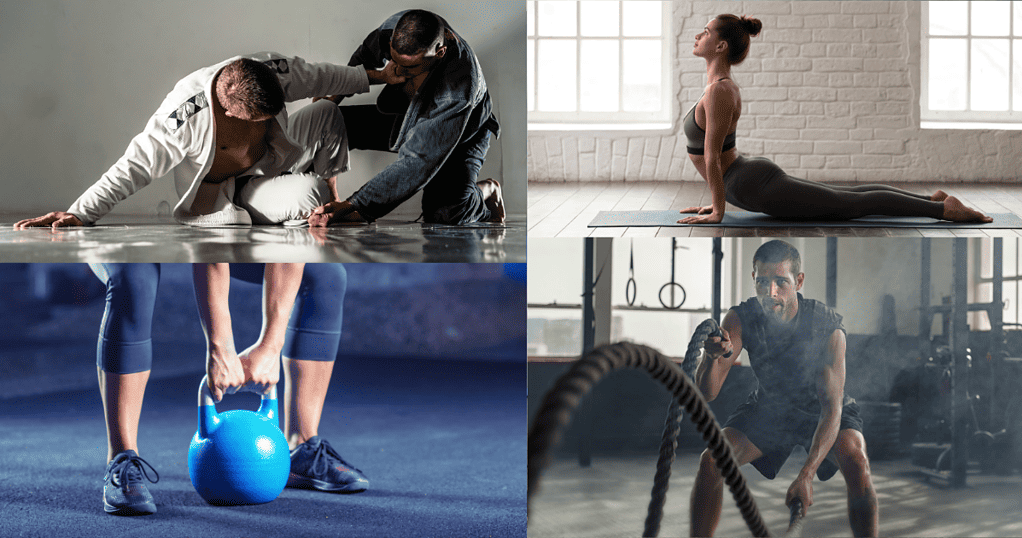
I’ve been fairly active throughout my life, in large part because I was involved in sports from a young age. But as we get older and lose some of that ready access to athletics that comes from school and youth sports leagues, it takes a bit of effort and becomes more difficult to find those active extracurricular activities.
To be clear, I’m not generally talking about “going to the gym” here. I had a gym membership for the majority of my adult life. And while I probably went to the gym more than the average person, my attendance was sporadic. I could be really consistent at times but then at other times go weeks or months without visiting the gym. For me, I think the reason behind this was that I just wasn’t passionate about going to the gym. I believed that working out was good for me and I liked feeling like I was doing something to benefit my health, but the truth is that I didn’t really enjoy going to the gym. It felt like a chore more than anything else.
This is why I think you need to find an active hobby that is really more of a passion… something you enjoy doing, that you want to do, that you can’t wait to do. If going to the gym fits the bill for you, then by all means do it. Just because I wasn’t passionate about going to the gym doesn’t mean you can’t be. But whatever your active passion happens to be, it does need to be something that is truly active. Playing in a slow pitch softball league or a bowling league once a week for a few months of the year isn’t going to cut it. Nothing against softball or bowling. I happen to enjoy both, but neither is going to have any significant positive impact on your physical fitness.
You need to find something that is physically challenging, that you can do all throughout the year, and ideally that has a community built around it. A couple of popular examples that immediately come to mind are yoga and CrossFit, but in my case I found two active passions…
If you’ve checked out the about page on this site, it will come as no surprise to learn that my number 1 active passion is Brazilian Jiu-Jitsu (or BJJ). Getting involved in BJJ was a game changer for me, and I was hooked from my very first class… which was more than 15 years ago! BJJ is a martial art that is also an incredible workout. It builds strength and endurance, improves flexibility and mobility, can lead to weight loss while increasing lean muscle mass, and can provide a real boost to both mental and physical health. I’ve seen BJJ improve the health and lives of so many people over the years, and it definitely has a passionate community around it. If you’re not sure what your active passion might be, I’d strongly encourage you to give BJJ a try. 🙂
The other active passion I picked up along the way is Tacfit, which I saw as a perfect complement to BJJ. Now I’m almost as passionate about Tacfit as I am BJJ. There’s a good chance you’ve never heard of Tacfit, and I’ll save the detailed explanation for another article. For now, I’ll just say that it’s an incredible program that helps develop numerous aspects of physical health like strength, endurance, mobility and agility just to name a few. If possible, find a Tacfit gym near you and try some classes in person. But even if there isn’t a Tacfit gym near you, give one of the digital or online programs a try.
While I have an admitted bias toward BJJ and Tacfit and highly recommend both of them (either together or independently), the main thing is to find one or two activities like these that YOU are passionate about. Activities that you enjoy doing, that you have people you enjoy doing them with, that you can’t wait to do, that you want to do every day, and that you can’t imagine not doing.
Tip #3 – Get Some Sleep

So far we’ve talked a lot about doing more and making an effort to be more active, but on the flip side of that coin you also need to make sure you’re getting enough rest.
According to the U.S. National Institutes of Health, getting good-quality sleep is important to the body’s ability to heal and repair tissues, balance hormone levels, and maintain a healthy immune system. Sleep also supports mental health, helps the brain function properly, and improves learning and problem-solving skills.
The amount of sleep needed every night varies by individual, but in general terms most adults need 7-9 hours of quality sleep per night. Unfortunately, it’s estimated that about a third of Americans don’t get enough sleep each night. And when you have ongoing sleep deficiency, not only do you miss out on the benefits of sleep noted above and negatively impact how well your body functions on a daily basis, but it can also raise your risk of some diseases and chronic health problems like high blood pressure, cardiovascular disease, diabetes, depression, and obesity.
There are a number of different things you can try to improve the quantity and quality of your sleep. Personally, I’ve been a night owl throughout most of my life, staying up late and being very active at night. Unfortunately for me, the rest of the world didn’t operate on my schedule and I still had to be up early in the morning, so I’m certain that I’ve gone through years and years of not getting enough sleep. I’m no doctor or sleep specialist, but two things that have worked for me to buck this trend and make a positive change in my sleep habits are sticking to a sleep schedule and turning off the electronics.
These days I don’t stay up well past midnight watching TV for no good reason. I don’t lay in bed endlessly scrolling on my phone. I treat sleep like the vital health activity that it is. When it’s time for bed, it’s time for bed. The TV is turned off. The phone is put away. I try to be asleep by around 10:30 PM and I usually wake up sometime around 6:00 AM which gives me about 7.5 hours of sleep per night.
Do some testing to see what works for you and then try sticking to a sleep schedule. You can even use one of the health trackers I mentioned earlier to get some insights on both the quantity and quality of your sleep.
Tip #4 – Edit Your Diet

Something you’re likely to hear quite a bit when talking about optimal health and fitness is “diet and exercise”. We’ve talked a fair amount about exercise, but now let’s take a look at what you can do to build a healthy diet.
When I say “diet” I don’t mean it in the sense of “I’m going on a diet so I’m eating salads all day every day”. I’m referring to your pattern of eating and drinking… the types of food and beverage that you regularly consume.
There are a number of different types of structured diets out there that you’ve likely heard of (for example, vegetarian diet, vegan diet, ketogenic diet, carnivore diet, etc.) These all describe different eating programs or patterns that determine the types of food and drink you consume, and the idea of “healthy eating” can mean different things to different people. For some it might mean eating more fruits and vegetables, more whole grains, and less red and processed meats, while for others it might mean eating more red meat with a lower fruit and vegetable intake. The reality is that this isn’t a one-size-fits-all situation and different people can find success and meet personal health goals using different diets.
I’ve tried different diets over the years, and I give major credit to the focus on what I put in my body for making me feel like I’m in the best shape of my life (even though I’m no spring chicken). Again, I’m no doctor or dietician, and I can’t really say what specific diet is “the best”. There’s an ongoing, raging debate about this, and the truth is probably that the question of what is best is highly individualized and varies from person to person. But based on my personal experience, I think I know what is bad and that is SAD… the Standard American Diet.
Most people eat way too much processed food. Way too much sugar. Way too much refined oils. So no matter what type of overall diet you choose to pursue, my personal opinion is that you should cut out the processed junk and make the food in your diet as minimally processed as possible (i.e. focus on “whole foods”). And to the extent possible, focus on food items that involve quality production methods (e.g. organic, pasture-raised, free-range, grass-fed, etc.)
But don’t just stop at the food you eat. You need to also take a look at the liquids you drink. If you’re drinking a lot of soda or alcohol, it’s likely that you’re also consuming a lot of sugar and empty calories. Find better ways to stay hydrated and when it comes to alcohol, drink in moderation (if you drink at all).
I used to drink a lot of soda and usually had a number of different varieties on hand. That’s not the case these days. So why did I stop? I just accepted what I already knew to be true… that even though these beverages were quite tasty, they definitely weren’t good for me. So I just made the decision to choose healthier options instead, and now I almost never drink soda. Instead, it’s mostly water, coffee, and tea for me.
This is what I mean when I say “edit your diet”. Identify and remove highly processed and refined junk from your diet and focus on eating food that is actually nutritious, fuels your body, and promotes good health.
Tip #5 – Give TRF a Try

There’s been a fair amount of buzz over the past several years about intermittent fasting (IF), which, at a high level, just involves following a pattern of intentionally fasting (i.e. not eating) for specific periods of time. Time-Restricted Feeding (or TRF) is a type of intermittent fasting where you restrict your non-fasting (i.e. feeding) to a specific time of day.
A popular protocol for time-restricted feeding is 16/8, which means you fast for 16 hours and then consume all of your food for the day during an 8 hour window before returning to the 16 hour fasting period. Rinse and repeat.
Research results have been mixed, but proponents of TRF believe that it can have a number of different health benefits like weight loss / avoiding obesity, improving cardiovascular health and blood pressure, and avoiding / managing type 2 diabetes (to name a few).
For me… I fall into the proponents camp when it comes to TRF. I’ve practiced time-restricted feeding for much of the past several years and credit it with additional reduction in my baseline body weight. When I started editing my diet as outlined above… and not really eating less, just eating better… I saw about a 6% drop in my baseline body weight. When I then took that same eating regimen and just changed the timing of when I ate (to follow the 16/8 TRF protocol) I saw an additional 6% drop in my baseline body weight. And that’s all while having more lean muscle mass and better overall physical fitness than I’ve ever had.
Since individual results can vary, to see what TRF can do for you your best bet might be to just give it a try. Just make sure to check with your doctor first if you have any existing medical conditions or just to make sure that TRF will be safe for you.
Conclusion
These obviously aren’t the only ways to improve your health, but they are some relatively simple ways to start building healthy habits and ultimately live a healthier life. You don’t have to tackle all of these tips at once. If you can… GREAT! But it’s okay to start with making small changes. If there’s just one thing on this list that you think you can start doing today and stick with… start doing it today. Then maybe in the near future you can add a second, a third, and so on. The important thing is to get started and actually do it. Don’t put it off for another day. Take action and take control of your health.


